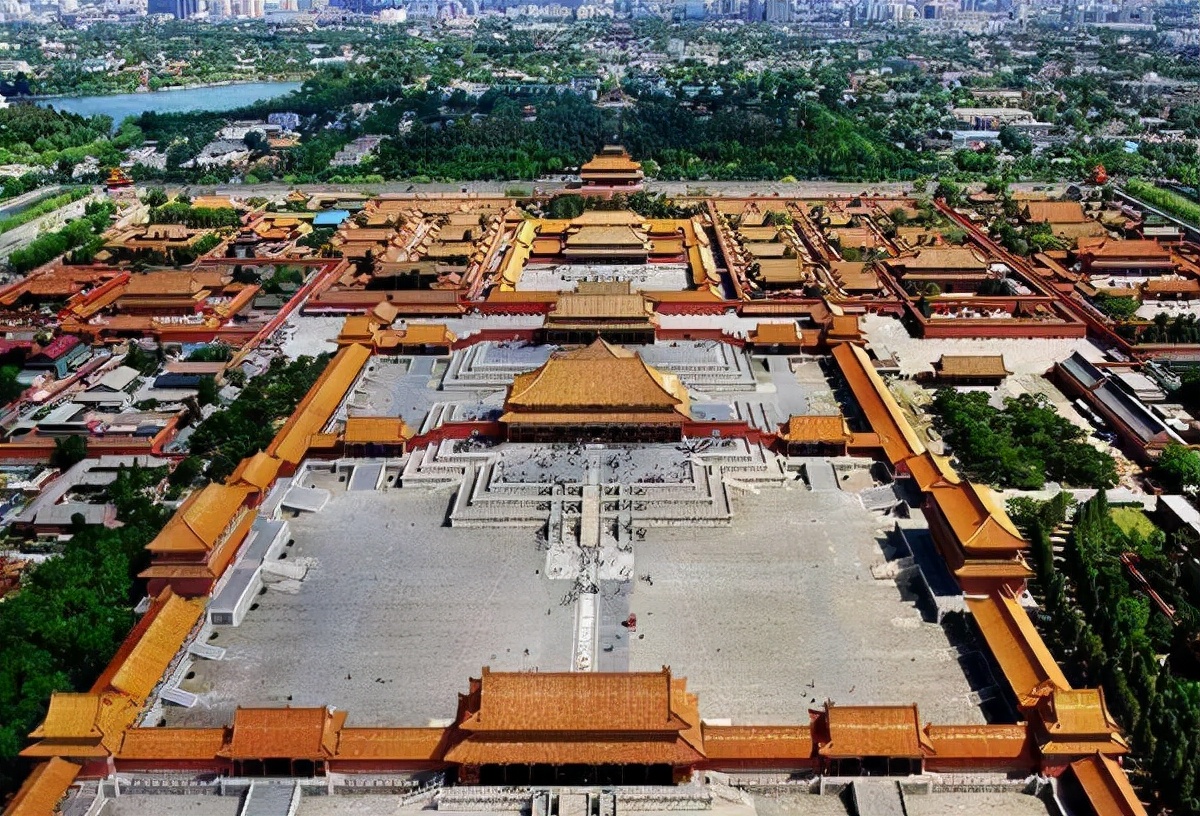As the ancient capital of China, Beijing has a long history, and many ancient buildings are lined up in Beijing in an orderly manner. Do you know the central axis of this?

Let's take you to Beijing to see, the central axis of the world's longest and most magnificent and most complete preserved city is in Beijing, and he is the backbone of Beijing. Therefore, many important buildings from ancient times to the present day are on this central axis.
Yongding Gate is the starting point of the central axis, the main gate of the Ming and Qing Dynasties Beijing City, that is, eternal stability. Along the central axis to the north to the sky bridge, in the past there are many rivers, the emperor sacrifice to pass through this bridge, so called the sky bridge, the sky refers to the son of heaven, the emperor.
Further ahead are the Zhengyang Gate and the Zhengyang Building, and later Weng Cheng enclosed him and demolished the wall on the front three gates of the street, which was called the big front door by the Beijingers. Further north is the Daming Gate (Ming Dynasty), the Qing Dynasty called the Great Qing Gate, the Republic of China called the Zhonghua Gate, and now this position is chairman Mao Memorial Hall, and further ahead is the Monument to the People's Heroes. Directly in front of the flagpole is the flagpole are all on the same line, followed by five Jinshui Bridges, backed by the Tiananmen Tower, Tiananmen gate in the Ming Dynasty called Chengtianmen, the meaning of "inheriting the fortune of heaven, under the command of heaven", the emperor ruled mankind according to the will of heaven. Behind is the end door, the end door is the door of the ceremonial symbol, and the end is the meaning of the beginning.
To the east of the duanmen is the Taimiao Temple, which is the place where the ancestral tablets of the emperor are enshrined, and is now the Palace of Culture of the Working People. On the west side is the Altar of Sheji, which is a place of worship for the god Sheji, blessing the Emperor Jiangshan Sheji Yonggu, which is now called Zhongshan Park. The recessed building in the back is called the Noon Gate, which is the main gate of the Forbidden City, not the place of decapitation, and after the Noon Gate we see the Jinshui River, like an open bow, and the five bridges are like five sharp arrows. The square in front of the Taihe Gate is the place where the Ming Emperor ascended to the court, and when he enters it, he is the Hall of Taihe, the Hall of Zhonghe, and the Hall of Baohe, which is what we call the Hall of the Three Treasures. Major ceremonial events were held in the Taihe Hall, where the Zhonghe Hall was a place of rest before the event, and the Bohol Hall was where the emperor held family banquets and imperial examinations, that is, the temple examination. Behind is the Qianqing Gate, where the Emperor of the Qing Dynasty entered the Dynasty, and behind it is the Third Palace, where the Emperor slept, and the Plaque of Zhengda Guangming was hung. Jiaotai Hall is the place where the empress dowager celebrates her birthday, Khumyeong Palace is where the Ming Dynasty empress lives, and through the imperial garden is the Shenwu Gate, which was originally called Xuanwu Gate, which was renamed to avoid the name of Kangxi. The mountain behind the Forbidden City is called Jingshan, which is the town hill of the Forbidden City, and there are five pavilions on it, representing gold, wood, water, fire and earth. After that, the Back Gate Bridge and tiananmen Gate corresponding to Tiananmen No longer exist, and now this area is called Di'anmen Street. Behind the Di'an Gate is the drum tower and bell tower, which was used to tell the time in ancient times, which is what we often call the morning bell and the twilight drum.
Beijing's central axis from Yongdingmen in the south to the Bell and Drum Tower in the north, a total length of 7.8 kilometers, today's central axis continues to extend to the north, the Bird's Nest Water Cube is also on both sides of the central axis, this central axis not only brings together the main buildings of Beijing and the wisdom of the working people, but also witnesses the vicissitudes of the Chinese nation.